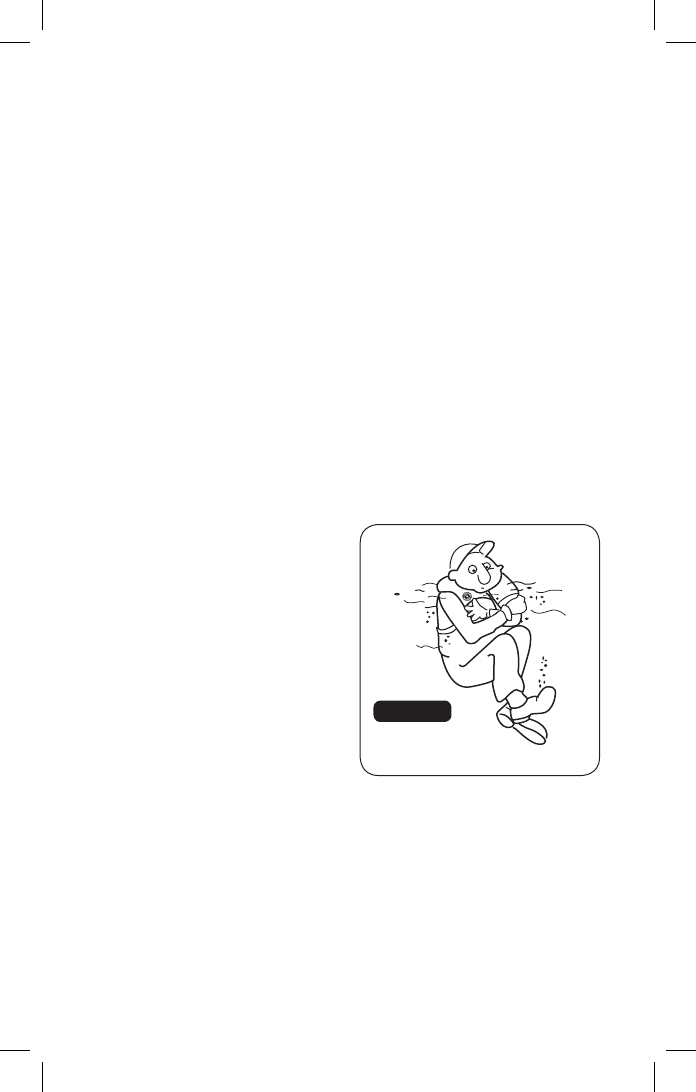
survivor, or a floating object on which you can lean or climb.
Swimming increases the rate of body heat loss. In cold water, drown-
proofing methods that require putting your head in the water are
not recommended. Keep your head out of the water. This will greatly
lessen heat loss and increase your survival time.
3) Use the standard H.E.L.P. position when wearing an Inflatable PFD,
drawing the legs up to a seated position, because doing so will help
you conserve body heat (Fig. 33).
4) Keep a positive attitude about your survival and rescue. This will
improve your chances of extending your survival time until rescued.
Your will-to-live does make a difference!
5) If there is more than one person in the water, huddling is
recommended while waiting to be rescued. This action tends to
reduce the rate of heat loss and thus increase the survival time.
EACH OF THESE DEVICES IS INTENDED TO HELP
YOU SAVE YOUR OWN LIFE
For your Inflatable PFD to function
properly, follow these suggestions to
verify that it fits, floats, and remains
in good condition.
1) Check the single point status
indicator before each use.
2) Get in the habit of re-arming the
inflation mechanism right after
each inflation.
3) Try your wearable Inflatable PFD
on and adjust it until it fits comfortably in and out of the water.
4) Mark your Inflatable PFD with your name if you are the only wearer.
5) Do not alter your Inflatable PFD. If it doesn’t fit properly, get one that
does. An altered device is no longer Coast Guard approved.
6) Your Inflatable PFD is not intended for use as a fender or kneeling
pad.
7) If your Inflatable PFD is wet, allow it to dry thoroughly before storing
Inflatable PFD Owner’s Manual 21
HELP Position
FIGURE 33


















